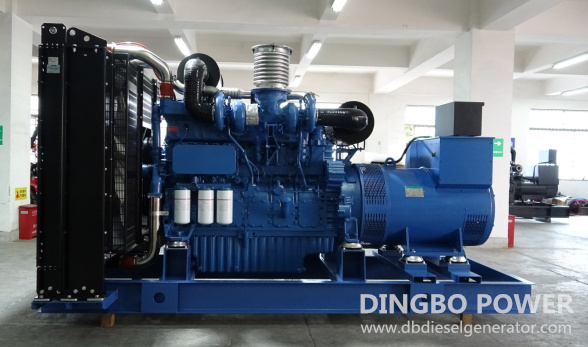dingbo@dieselgeneratortech.com
+86 134 8102 4441

- Home
- Products
- About Us
- Service
- News
- Technical Support
- Contact Us
dingbo@dieselgeneratortech.com
+86 134 8102 4441
Apr. 14, 2025
Diesel engines of generator sets may develop various faults during operation due to diverse causes. If the root cause is not identified and addressed promptly and you allow the engine to continue operating with faults, it can lead to reduced power, increased fuel consumption, and even catastrophic failures. This article briefly introduces the causes of diesel engine failures and common methods for diagnosing them.
Diesel engine faults generally fall into two categories:
1. Gradual natural wear: Includes corrosion, fatigue wear, and abrasive wear. This is a normal process that can only be mitigated through proper maintenance and usage to extend the engine’s lifespan.
2 Sudden failures: Caused by improper operation or poor maintenance, such as insufficient oil/water levels, clogged fuel lines, water ingress, dirty filters, or incorrect fuel injection/valve timing.
While fault causes vary, systematic analysis based on symptoms can simplify troubleshooting. Once identified, faults must be resolved promptly.
To quickly and accurately diagnose your diesel genset’s engine faults, you need to conduct thorough inspections and logical analysis. The process typically follows a from external to internal, simple to complex approach, systematically examining components and systems.

This method relies on observation without instruments:
Inquiry: Gather the engine’s history, including maintenance records, common issues, and pre-failure symptoms.
Listening: Listen to engine sounds at varying RPMs to detect instability, abnormal knocking, or irregular exhaust. Abnormal sounds can reveal early signs of faults. The characteristics and location of noises help pinpoint issues:
Post-startup noise that diminishes as the engine warms up: Indicates excessive piston-to-cylinder clearance.
Sharp, rhythmic metallic knocking in cylinders: Suggests premature fuel injection timing.
Dull, irregular knocking: Points to delayed fuel injection timing.
Unusual rattling or clattering: Signals excessive component clearance or loose parts.
Observation: Check for visible issues like exhaust smoke color, oil discoloration, leaks (oil/water/air), or abnormal crankcase emissions.
Touch: Feel high-pressure fuel line vibrations, component temperatures (e.g., bearings, coolant), and check for loose parts.
Smell: Identify odors like burnt oil, fuel, or scorched rubber.
Replace suspected engine components with functional alternatives to confirm faults. For example:
If black smoke is suspected to stem from a faulty injector, replacing it with a working one can verify the issue.
Test hypotheses through adjustments or partial disassembly:
Example 1: Suspected piston/cylinder wear can be tested by adding oil to the cylinder. Improved compression confirms the diagnosis.
Example 2: Adjust fuel supply volume if black smoke is observed. Reduced smoke validates excessive fueling as the cause.
1. Identify symptom characteristics: Note specifics like smoke color, noise patterns, temperature anomalies, odors, and other irregularities.
2. Link symptoms to engine mechanics: Correlate observations with the engine’s structural principles and historical performance data.
3. Systematic segmentation: Break down inspections by system (e.g., fuel, cooling, lubrication) and progress from simple to complex checks.
4. Narrow down causes: Eliminate unlikely factors to focus on critical issues, ensuring accurate conclusions.
Effective fault diagnosis in diesel generators’ engines requires a combination of technical knowledge, systematic analysis, and sensory observation. By understanding engine failure causes and applying structured methods—such as sensory checks, component comparisons, and hypothesis testing—you can swiftly resolve issues, minimize downtime, and maintain engine reliability. Always prioritize safety and adhere to manufacturer guidelines during troubleshooting.
Quicklink
Mob.: +86 134 8102 4441
Tel.: +86 771 5805 269
Fax: +86 771 5805 259
E-mail: dingbo@dieselgeneratortech.com
WhatsApp: +86 134 8102 4441
Add.: No. 10 Kechuang Road, High tech Zone, Nanning, Guangxi, China